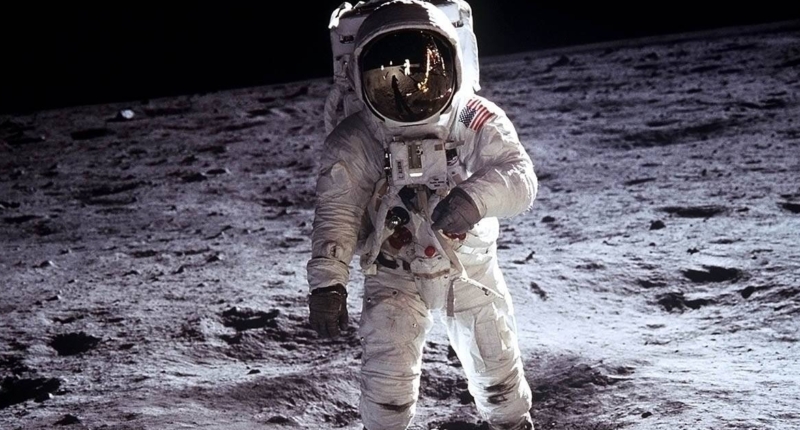The Apollo program was a historic achievement in human spaceflight, with its pinnacle being the first landing on the Moon in 1969. The program made a total of 11 spaceflights, six of which landed humans on the Moon, while others tested equipment and gathered scientific data. The Apollo 13 mission faced an unexpected explosion, leading to a dramatic rescue mission to bring the astronauts back to Earth safely. The program paved the way for more extensive science operations on the Moon, including longer stays on the surface and exploring different regions. The legacy of the Apollo program inspires new generations of space explorers and NASA’s Artemis program, which aims to return humans to the Moon and establish a sustainable presence to explore Mars.
The Apollo program, NASA’s historic space mission to put humans on the Moon, began with a speech by President John F. Kennedy in 1962. The program achieved its goal in 1969, with the first human steps on the Moon. During the program’s peak, it employed almost 500,000 people and involved support from over 20,000 private firms and universities.
The Apollo program’s success was marked by six manned landings on the Moon and the safe return of the astronauts. Additionally, the program provided almost 400 kilograms of lunar samples and generated extensive scientific data on subjects such as soil mechanics, meteoroids, seismicity, heat flow, lunar ranging, magnetic fields, and solar winds.
The program’s first mission, Apollo 1, ended in disaster when a fire broke out in the command module, killing the three astronauts on board. After this tragedy, the next mission was designated Apollo 4, an unmanned flight that tested three Saturn V rockets. Apollo 5 was another unmanned mission that tested the Lunar Module, which would later land on the Moon.
The Apollo program continued with a mix of manned and unmanned missions, testing equipment and conducting experiments. Apollo 11, the program’s most famous mission, successfully put humans on the Moon for the first time. Overall, the Apollo program made a total of 11 spaceflights, including six manned missions, and it remains the only program to have landed humans on the Moon.
The program’s impact on science and technology was enormous, and its legacy continues to inspire new generations of space explorers. NASA is currently planning to return humans to the Moon with the Artemis program, which aims to establish a sustainable presence on the Moon and pave the way for human exploration of Mars.
The Apollo program was a series of manned and unmanned missions that aimed to put humans on the Moon. Apollo 5 was an unmanned flight that tested the ascent and descent stages, propulsion systems, and spacecraft structure, among other key spaceflight components.
Apollo 6 was the final test flight that ensured that the Saturn V launch vehicle and Apollo spacecraft were fit for manned missions. However, due to some issues during the mission, it was declared to be only partially successful.
Apollo 7 was the first crewed flight of the program, with astronauts Walter Schirra Jr., Doll Eisele, and Walter Cunningham going on an 11-day mission orbiting the Earth. They tested the various components of the command module and spacecraft to ensure that they worked as intended.
Apollo 8 was a mission that took astronauts Frank Borman, Jim Lovell, and Bill Anders to lunar orbit and back. The mission was initially intended to be an Earth-orbital test of the lunar module but was changed to sending the mission to the Moon on an accelerated schedule.
Apollo 9 was the third crewed flight of the program, where astronauts James McDivitt, David Scott, and Russell Schweickart went on a ten-day mission to simulate maneuvers that would actually be used during a lunar mission.
Apollo 10 was a dress rehearsal for a Moon landing and was carried out by astronauts Thomas Stafford and John W. Young. They flew as close as 16 kilometers from the Moon’s surface and scouted the landing site for the Apollo 11 mission.
After years of research and testing, humans finally landed on the Moon on July 20, 1969, with the Apollo 11 mission. Neil Armstrong made history as the first human to step on the Moon and famously said, “One small step for man, one giant leap for mankind.”
Despite being struck by lightning twice during its first minute of flight, the Apollo 12 mission went on to perform the second successful landing on the Moon. Astronauts Charles Conrad Jr., Richard F. Gordon, and Alan L. Bean were part of the mission and demonstrated a precision landing method that paved the way for future Apollo missions to land in more difficult but scientifically important locations.
The Apollo program remains a landmark achievement in human spaceflight, and its legacy continues to inspire new generations of space explorers. NASA is currently planning to return humans to the Moon with the Artemis program, which aims to establish a sustainable presence on the Moon and pave the way for human exploration of Mars.
The Apollo program was a series of manned and unmanned missions aimed to put humans on the Moon. Apollo 13 took off on April 11, 1970, with the aim of being the third human landing on the Moon. However, a short circuit caused an explosion in one of the service module’s oxygen tanks, forcing the crew to use the lunar module as a lifeboat to sustain them for their return trip to Earth.
Apollo 14 launched on January 31, 1971, and completed the third human landing on the Moon. Astronaut Alan Shepard famously smacked two golf balls on the Moon, leaving them there permanently.
Apollo 15 launched on July 26, 1971, and completed the fourth successful human landing on the Moon. It was the first “J series” Apollo mission, featuring longer stays on the surface and more extensive science operations than previous Apollo missions.
Apollo 16 launched on April 17, 1972, and landed in the Descartes Formation on the Moon. Scientists initially thought the formation was volcanic, but samples collected during the mission showed otherwise.
Apollo 17 was the sixth and last Apollo mission to land on the Moon. The crew consisted of astronauts Eugene Cernan, Harrison Schmitt, and Ronald Evans. The lunar module landed on the Moon on December 11, 1972, and Cernan and Schmitt became the last humans to set foot on the Moon, at least for more than 50 years.
The Apollo program remains a landmark achievement in human spaceflight, and its legacy continues to inspire new generations of space explorers. NASA is currently planning to return humans to the Moon with the Artemis program, which aims to establish a sustainable presence on the Moon and pave the way for human exploration of Mars.
Don’t miss interesting posts on Famousbio









